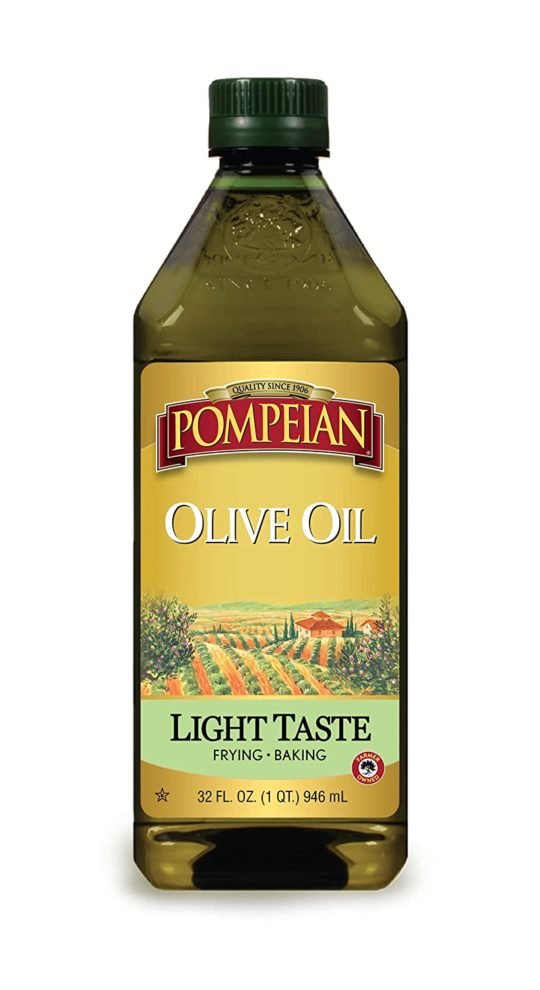Updated on April 9th, 2023
Are you thinking of Asian cuisine? Then you’re probably planning on sesame seed oil as well. This ingredient is such a vital part of the region’s recipes; it surfaces on almost everything. And it contributes such a unique flavor that’s rarely replicated in any other cuisine around.
But as excellent as sesame seed oil is, you won’t always be able to use it. And because you’ve grown accustomed to its impressive effects, finding a substitute may seem impossible. But tons of other ingredients can take their place, even in Asian dishes. But what makes this Asian condiment so interesting? And how best do you find a replacement for it?
What’s Special about Sesame Seed Oil?
As the name implies, the sesame seed oil is gotten from the seeds of the sesame plant. The seed source is high in B-vitamins and protein, but these nutrients aren’t carried over into the oil. Instead, sesame seed oil contains most of the seeds’ fatty acids and vitamin E. Plus, it also has tons of antioxidants, including phytosterols.
The condiment is produced in two forms. The first is the regular sesame oil, which is extracted from the crushing of raw seeds. This oil has a light brown color with a mild yet neutral flavor. But the other is gotten from toasted sesame seeds, which give it a darker shade and a rich, nutty taste. And though their taste and color vary, both types have various culinary uses.
Sesame Seed Oil Uses in Recipes
Sesame seed oil is a popular addition to Asian recipes. It’s why you’ll find it heavily included in Chinese, Japanese and Korean dishes. It’s also commonly used cooking oil in Middle Eastern cuisine. And both types have been adopted into the recipes of other regions, as they add a rich and exotic result to foods.
You’ll find sesame oil in every kind of cooking method. It’s a favorite for sautéing and stir-frying, both techniques which are synonymous with Asian cuisine. You’ll also notice it’s used to flavor meats and fish and to top or garnish for vegetable dishes. The toasted sesame oil is a potent source of nuttiness for many recipes, including baking. And both oils offer numerous health benefits, including tackling inflammation, protecting the skin, and preventing possible heart diseases.
To understand how versatile sesame seed oil can be, here’s a list of dishes to which it’s commonly added;
- Chicken stir-fry
- Sautéed vegetables
- Sesame chicken
- Turkey stir-fry
- Soups
- Fried rice
- Grilled chicken
- Marinades
- Noodles
- Teriyaki sauce
- Sautéed chicken
- Fried egg toast
- Salads
- Dressings
- Tahini
- Pulao
- Asian lettuce wraps
- Beef bulgogi
- Glazed chicken thighs
- General Tsao’s chicken
- Ahi Poke Basic
- Spicy sushi mayo
- Crispy vegetable pancakes
- Jasmine rice
- Sticky lamb buns
- Crispy chicken
- Dumplings
- Kimchi pancakes
- Japchae
- Risotto
- Sauces
- Baked chicken legs
- Korean pork chops
- Roasted vegetables
- Fillings
- Roasted fish
- Ramen bowls
Sesame Seed Oil Substitutes
You may not have access to sesame seed oil in your region since the oil is mainly made in Asian and Mediterranean regions. Plus, some may be allergic to sesame seeds, making it impossible to cook with the oil. And sometimes, you may need to watch your calorie intake, causing you to cut the high-calorie sesame oil from your diet. Also, because the oil influences blood sugar levels, it may not be recommended if you’re on certain medications, like diabetic people.
But it doesn’t mean you can enjoy the advantages of sesame seed oil in your dishes. Any of these substitutes will work just as well as the nutty oil in your cooking. So, whenever you have to cut sesame seed oil from your recipe, replace it with these handy alternatives;
Light Olive Oil

Olive oil has been ranked one of the healthiest oil globally and retains this position to date. Plus, it’s incredibly versatile and can be included in all dishes that call for sesame oil. It also provides lots of health benefits, ranging from boosting antioxidant intake to offering heart-friendly monounsaturated fats.
As such, olive oil can replace regular sesame seed oil in equal amounts. And you can use it for soups, sauces, dressings, sauces, and many other dishes. But the light olive oil is best for this purpose since it offers the mildest flavor that will mimic regular sesame oil.
Grapeseed Oil

This neutral-tasting oil is another substitute that’s just as flexible as regular sesame seed oil. Plus, it’s commonly found in grocery stores and is a common ingredient in many cuisines. Grapeseed oil is also another healthy alternative, being rich in polyunsaturated fats. It also carries a decent amount of vitamin E, which helps to prevent inflammation.
You can use grapeseed oil in equal amounts as regular sesame seed oil. And it’ll work in all recipes, including grilled dishes, stir-fries, sauces, soups, salads, dressings, and marinades.
Avocado Oil

If you’re a fan of stir-fries, then avocado oil makes an excellent sesame seed oil replacement. And though it has a light earthy flavor, it’s balanced chiefly enough to replicate the neutral taste of regular sesame oil. Avocado oil is also at the top list of healthy options on the market. And it retains this spot with its antioxidant-rich content, especially lutein renowned for improving eye health.
Its high smoking point also makes avocado perfect for high heat cooking. It’s why you can use it in equal ratios as sesame seed oil in stir-fries and grilled recipes.
Perilla Oil

If you’re in search of a toasted sesame seed oil replacement, you’ll want to consider perilla oil. This substitute is derived from crushing the seeds of the perilla plant and offers a rich nutty taste that resembles toasted sesame seeds. Perilla oil is also another healthy option, being rich in omega-3 fatty acids. It’s also renowned for other health benefits as well, including improving mental health.
You can add equal amounts of perilla oil in place of sesame seed oil in your recipes. It’ll add a significant nutty boost to the flavor and improve the richness of the final dish.
Roasted Peanut Oil

Toasted sesame seed oil offers a rich nutty taste and an attractive golden brown color to recipes. It’s why this substitute works perfectly to replace it. Roasted peanut oil is commonly drizzled over vegetables, meat, and fish as a garnish. Plus, it’s also added to marinades or as a glaze for grilled meat, fish, and vegetables.
Like toasted sesame seed oil, the roasting of the peanut contributes a deep brown color to this peanut oil. Plus, it adds a hint of smokiness and enhances the nutty flavor extracted with the oil. The oil is also packed with healthy monounsaturated fats, polyunsaturated fats, antioxidants, and vitamin E. But while it’s an equally excellent substitute for toasted sesame seed oil, it’s not recommended if you have a peanut allergy.
Frequently Asked Questions (FAQs)
How can I make my sesame oil?
Put ¼ cup of sesame seeds into one cup of neutral-flavored oil like canola or vegetable. Then, heat the mixture gently over medium heat in a skillet or pan for two minutes. The DIY oil is ready when the seeds start to brown. And note that this substitute is best used as a replacement for toasted sesame seed oil.
Can I use coconut oil instead of sesame seed oil?
Yes, you can. Coconut oil will work as a replacement for regular sesame seed oil. But note that you may taste the inherent coconut flavor in your recipe. But it works in many cases, especially for vegetable dishes.
Can I use safflower oil instead of sesame seed oil?
Yes, you can. Safflower oil works to replace regular sesame seed oil, especially in baking. And though it’s not a neutral-tasting alternative, its mild flavor is welcomed in such dishes.
Conclusion
Sesame seed oil is a crucial part of Asian and Mediterranean cuisine, and both its varieties add an impressive effect to many dishes. But you can always recreate its remarkable influence in your recipes with these substitutes. So, when next you’re out of any sesame seed oil, rest assured that there’s a solution for you.
